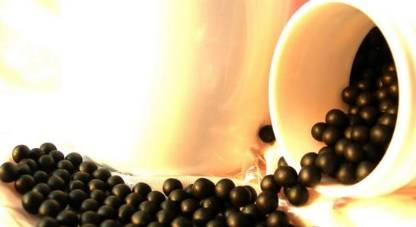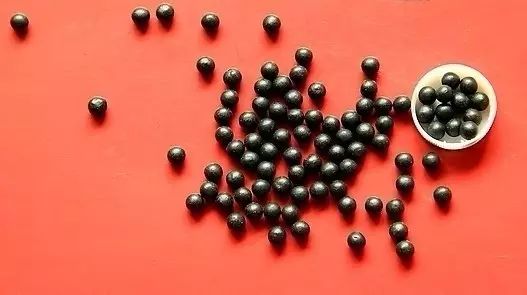
Traditional Chinese Medicine Pills
Pills refer to solid preparations that are spherical or quasi-spherical, made from raw medicinal materials combined with suitable excipients. They are one of the traditional dosage forms in Chinese medicine, first documented in the “Fifty-Two Disease Formulas” from the pre-Qin period. Even today, despite the significant advancements in modern pharmaceutical industry, TCM pills remain one of the most widely used forms of medication in daily life.

Classification of Pills
Pills are classified into various types based on their manufacturing methods and excipients, including honey pills (蜜丸, mì wán), water pills (水丸, shuǐ wán), water-honey pills (水蜜丸, shuǐ mì wán), paste pills (糊丸, hú wán), wax pills (蜡丸, là wán), concentrated pills (浓缩丸, nóng suō wán), and drop pills (滴丸, dī wán).
Water Pills (水丸, shuǐ wán) are made from finely powdered medicinal slices using water (or other binding agents such as yellow wine, vinegar, diluted medicinal juice, sugar solution, or water containing less than 5% honey) as a binder.
Water pills are small, with a dense and smooth surface, making them easy to swallow and resistant to moisture; they disintegrate quickly for better absorption and are generally suitable for exterior-releasing agents, heat-clearing agents, and digestive agents. They can encapsulate volatile or irritating substances to mask unpleasant odors or incorporate slow-release and fast-release medications into the inner and outer layers of the pill, respectively, creating long-acting formulations, such as Liu Shen Wan (Six Divine Pills) and She Xiang Bao Xin Wan (Musk Heart-Protecting Pills).
Honey Pills (蜜丸, mì wán) are made from finely powdered medicinal slices using processed honey as a binder, with those weighing over 0.5g classified as large honey pills and those under 0.5g as small honey pills.
Honey pills enhance the nourishing effects of the medicine, correct unpleasant tastes, and slow down the dissolution and absorption of the medicine, resulting in a milder and more prolonged effect. They are mainly used for tonifying herbs or treating chronic diseases, such as Wu Ji Bai Feng Wan (Black-Boned Chicken White Phoenix Pills), Xiao Er Zhi Bao Ding (Children’s Zhi Bao Pills), and Niu Huang Qing Xin Wan (Cattle Gallbladder Heart-Clearing Pills).
Water-Honey Pills (水蜜丸, shuǐ mì wán) are made from finely powdered medicinal slices using both water and processed honey as binders.
They have low moisture content, making them easy to store and consume; their effects are slow and lasting, generally suitable for tonifying agents, such as Bu Pi Yi Chang Wan (Spleen-Strengthening and Intestinal-Benefiting Pills) and Gui Fu Di Huang Wan (Cinnamon and Rehmannia Pills).
Concentrated Pills (浓缩丸, nóng suō wán) are made from extracts of medicinal slices or parts thereof, combined with suitable excipients, using water, honey, or a mixture of honey and water as binders.
They are small, with a high content of active ingredients, making them easy to take and convenient to carry, such as Liu Wei Di Huang Wan (Six Flavor Rehmannia Pills), Xiao Ke Wan (Diabetes Pills), and An Shen Bu Xin Wan (Calming and Heart-Nourishing Pills).
Paste Pills (糊丸, hú wán) are made from finely powdered medicinal slices using rice flour, rice paste, or wheat paste as binders.
They have a harder texture and dissolve slowly, which can prolong the medicinal effect and reduce gastrointestinal irritation. Toxic or irritating medicinal slices, as well as formulas requiring delayed effects, can be made into paste pills, such as Xiao Jin Wan (Small Golden Pills) and Xi Huang Wan (Western Yellow Pills).
Wax Pills (蜡丸, là wán) are made from finely powdered medicinal slices using beeswax as a binder.
Wax pills do not disintegrate in the body and are expelled intact, similar to modern long-acting formulations with a skeletal structure. They are suitable for medications containing many toxic or highly irritating substances or those requiring intestinal absorption, such as Fu Ke Tong Jing Wan (Gynecological Menstrual Regulation Pills) and San Huang Bao La Wan (Three Yellow Wax Pills).
Drop Pills (滴丸, dī wán) are spherical or quasi-spherical preparations made by heating and melting raw medicinal materials with suitable matrices and dropping them into a non-miscible, non-reactive cooling medium.

Precautions for Taking Pills
(1) When using TCM pills in conjunction with Western medicine, it is best to space the two by at least 30 minutes, regardless of which is taken first.
(2) Generally, pills should be taken with a small amount of warm water. Large honey pills should not be swallowed whole due to their size; they should be chewed or divided into smaller pieces before taking with warm water. Some emergency pills can be placed directly under the tongue.
(3) For pills treating stomach pain or vomiting (such as Huo Xiang Zheng Qi Wan or Fu Zi Li Zhong Wan), they can be taken with ginger decoction to enhance their effects.
(4) For pills treating dysmenorrhea (such as Ai Fu Nuan Gong Wan), they can be taken with warm red sugar water to enhance their warming and blood-activating effects.
(5) For pills treating chronic enteritis (such as Bu Zhong Yi Qi Wan), they can be taken with jujube decoction to enhance their spleen-tonifying and qi-invigorating effects.
(6) For pills treating stroke-related hemiplegia or facial asymmetry (such as Da Huo Luo Wan), they can be taken with yellow wine.
(7) Sedative and calming pills (such as Tian Wang Bu Xin Wan) should be taken half an hour before bedtime.
(8) Pills for preventing habitual miscarriage and threatened miscarriage (such as Zi Shen Yi Tai Wan) can be taken with light salt water or honey water.


